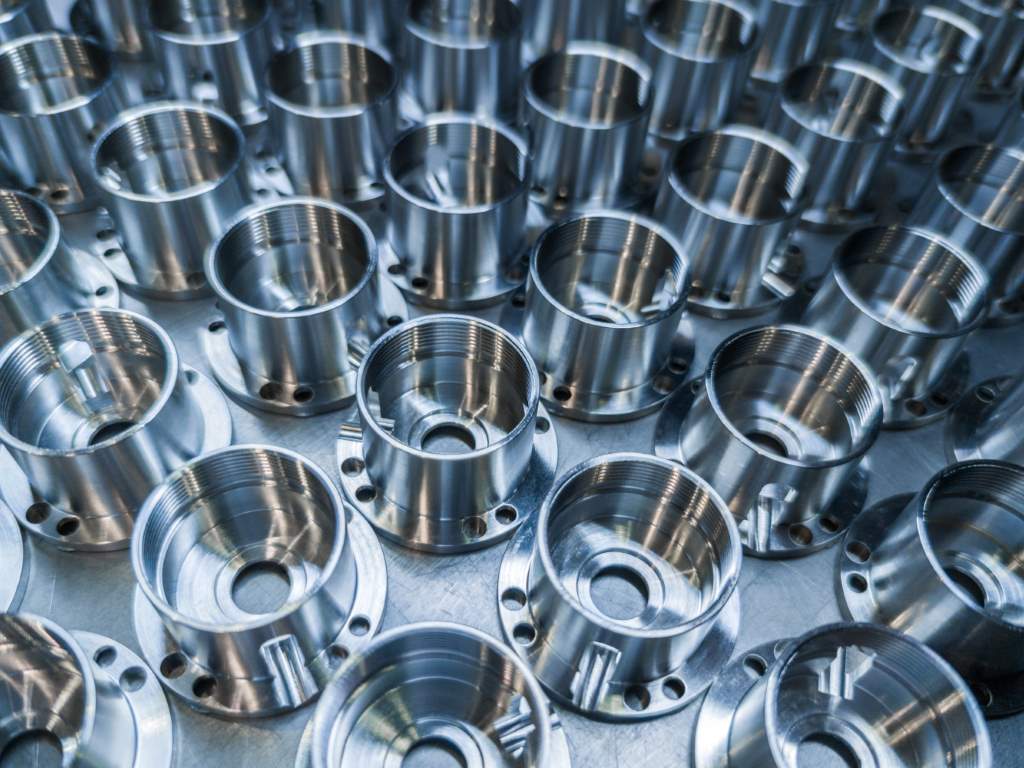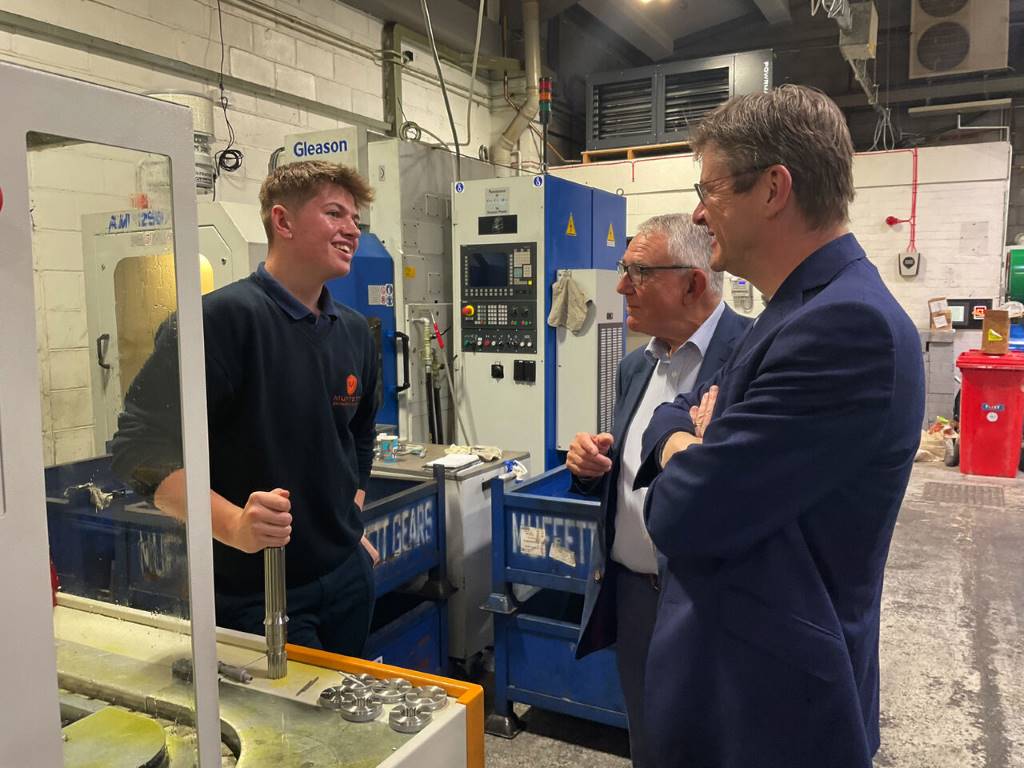No half measures: new CMM technology from Aberlink

It’s always good to see Aberlink developing new technology. The Eastcombe, Gloucestershire metrology specialist designs, manufactures and assembles all its products in-house, exporting around 70% of its wares around the globe. Dave Tudor headed off to the Cotswolds to find out more about its two latest innovations – the Extol and Horizon coordinate measuring machines.
It’s always good to see Aberlink developing new technology. The Eastcombe, Gloucestershire metrology specialist designs, manufactures and assembles all its products in-house, exporting around 70% of its wares around the globe. Dave Tudor headed off to the Cotswolds to find out more about its two latest innovations – the Extol and Horizon coordinate measuring machines.
Around four and a half years ago, Aberlink launched its highly popular Xtreme CMM and this was a significant milestone for two reasons: it was the first commercially available hexapod-based CMM; and it marked a serious widening of its product portfolio. Prior to the Xtreme, the company only manufactured bridge-type CMM machines.

“The Xtreme opened up a whole new marketplace for us,” recalls Aberlink’s commercial director, Gavin Bailey. “Because it runs on mechanical bearings and features a highly rigid construction, it became very popular for shopfloor use – but to be honest it was never really designed solely for that purpose from the outset.
“The Extol however most definitely is. Of course it can be used in a dedicated inspection room but its robustness, accuracy, repeatability and compact footprint means the Extol is at home working alongside machine tools on the shopfloor – either standalone or as part of a manufacturing cell. It can be situated exactly where it’s needed. From an evolutionary perspective, it will replace the Xtreme.”
Both the Xtreme and Extol are non-cartesian CMMs, but a significant difference between the two is that the new Extol incorporates a delta mechanism rather than the hexapod arrangement.
“The problem you have with any Cartesian machine (linear 3-axis) is that as you take the drives away from the centre of gravity of the axes you get a build-up of yawing forces and moments,” explains Aberlink’s technical director Marcus Eales.
“A non-cartesian arrangement negates this to a degree but there were a number of challenges we had to overcome. Delta systems are notoriously difficult to map – but the good thing about a delta structure is that the integral carbon fibre rods impart the loads into the carriage exactly where you want them – right in the centre of the circulating balls.”
Delta debut
So the Extol was born; the world’s first CMM to utilise a delta mechanism with said mapping challenges duly overcome largely through clever design and software-based compensation. It features fully-sealed linear recirculating dual bearings which ensure smooth operation and prevent dirt ingress, and a directly coupled belt drive-system that eliminates the need for a gearbox and any associated backlash issues.
Combined, these two aspects afford an additional benefit: in operation, the Extol’s silky smooth running means long styli can be used without the risk of false triggering due to vibration.
The result is an affordable (£19,995), accurate, repeatable and robust CMM that remains true to Aberlink’s original objective of developing and manufacturing a machine that can run around the clock under shopfloor conditions. Swiss-made DC motors and a new Deva motion control system provide the levels of reliability required for sustained shopfloor use; its solid granite plate table can handle loads up to 200kg.
For many SMEs and smaller manufacturers, a lack of shopfloor space for new equipment is a real headache so potential buyers will be pleased to know that with its positively bijou dimensions of 730 (X) x 715 (Y) x 2,000mm (Z), excluding its monitor arm, the Extol actually takes up less real estate than its predecessor, the Xtreme – yet it offers a larger measurement volume of 370mm diameter (X, Y) x 270mm (Z).
But despite its modest dimensions, the Extol weighs in at a reassuringly substantial 180kg. Accessibility and ergonomics have been improved too, facilitating simple one-off component part inspection, larger batches or automatic batch loading.
Corrective action
In an integrated manufacturing cell, the Automatic Tool Offset Correction available within Aberlink’s 3D software complements the attributes of the Extol perfectly, enabling its utilisation as part of a fully automated production process in demanding manufacturing environments.
On the subject of applications, it seems the Extol is already generating interest in the marketplace: “We’ve been approached by a number of machine tool suppliers involved with sizeable turnkey projects,” explains Aberlink’s business development manager Chris Davies. “What they need is an automated, in-process measurement system with closed-loop feedback, so the timing of the Extol’s launch is absolutely perfect for those applications.”
Completing the impressive specification is a scale resolution of 0.1µm, maximum acceleration vector of 750mm/s² and a volumetric accuracy of (2.6+0.4L/100)µm. Currently, for connected manufacturing, the Extol interfaces with Fanuc controllers as standard – but plans are afoot to expand this functionality to other manufacturers. Siemens is next on the agenda.
The Extol is sold as standard with a Renishaw TP20 probe but is fully compatible with the TP200 variant which uses strain gauge technology so it doesn’t exhibit lobing characteristics, making it ideal for high accuracy applications and when using longer styli. In addition, the TP200 probe has a longer touch-trigger life expectancy compared to the TP20, also making it ideal for automated and high-volume applications.
Keeping on top of temperature
We all know that precision inspection equipment doesn’t tend to respond favourably to fluctuations in ambient temperature. We also know that manufacturing facilities, with shutter doors opening and closing not to mention the idiosyncrasies of the Great British weather, are often not the most stable of environments temperature wise.
So with the Extol being essentially a shopfloor CMM this could potentially wreak havoc in terms of accuracy of measurement and repeatability – but thankfully Aberlink has things covered in this department.
Arctic-like extreme icy blasts aside, five temperature sensors monitoring both the machine and ambient temperature ensure that the Extol is capable of operating in uncontrolled environments, reporting measurements as though they had been taken at 20°C. The software will also produce a warning should the temperature change at a rate that is not conducive with reasonable metrology practice.
Horizon on the horizon

Although originally unveiled at the Control exhibition last year as a prototype, Aberlink’s second new machine – the Horizon CMM – was due to get its official launch at the same show this year, but COVID-19 scuppered those plans.
In fact, both the Extol and the Horizon were due to get their respective UK launches at MACH 2020. That of course didn’t happen either with the show postponed until April 2022.
The Horizon is a bridge-type CMM – but a key differentiator is that it uses non-contact, frictionless linear drives which are not only key to its lightning fast contact scanning, smooth operation and reliability, but also help keep maintenance to a minimum as there are no moving parts.
With an 800mm travel in the X-axis, three options in Y (1,000, 1,500 or 2,000mm) and 600mm in Z, the Horizon completes Aberlink’s range of bridge CMMs and will further extend its reach into the high-end CMM marketplace.
The innovative kinematic isolated drive system uses a tetrahedral arrangement of carbon fibre tubing to transfer the thrust from the motors through the centre of gravity of the moving parts. This drive system is completely independent of the metrology structure and not only avoids acceleration induced errors but also has the effect of thermally isolating the linear motors from the metrology structure of the CMM.
Gavin Bailey elaborates: “A potential downside of using linear motors is that because current is being put through a coil, heat is generated – and heat in metrology is to be avoided at all costs.”
The optimised split Y-axis carriageway design derives the metrology benefits of a high carriageway whilst providing the convenience and ease of loading associated with a traditional bridge structure. Further clever design and use of high-tech material technology ensures that a varying cross-section X-beam optimises the stiffness-to-weight ratio along the entire axis.
The Horizon is the most accurate machine ever produced by Aberlink. When fitted with the Renishaw SP25M scanning probe, the first-term accuracy statement is just 1.75um. Its scanning speed is equally as impressive – up to 130mm per second is possible. And like its Extol stablemate, the Horizon CMM sports automatic temperature compensation capabilities; unlike its smaller sibling however, the Horizon uses air bearings so it needs a cleaner environment to operate efficiently.
For small, flexible or 2D parts, Aberlink’s camera system can be fitted to the Horizon. A neat magnetic, kinematic joint design allows the probe and camera to be changed in seconds.
The new Horizon CMM is priced at a whisker under £35,000.
Software matters
It’s all well and good nailing the hardware, but all that’s wasted if the operating software falls short. Well-developed software should be user-friendly and intuitive to the operator but extremely powerful under the bonnet.
Fortunately, Aberlink’s 3D measurement software ticks both boxes; in fact it’s so widely acclaimed that Aberlink sells it as a product in its own right. And it’s used on both the Extol and the Horizon.
Aberlink 3D will construct a representation of a component on the monitor as it is measured. Dimensions between measured features can then be picked off and appear exactly as they do on the part drawing.
The software incorporates GD & T dimensioning, RPS alignment and SPC data analysis. Further modules are also available for offline programming of parts from a CAD model and also for comparing measured results to the CAD.
With Aberlink 3D, there is such a thing as a free lunch. Not only are software upgrades free for the lifetime of the machine, there’s also no maintenance charge. When you buy Aberlink software it’s yours; an old-fashioned software model but one the company’s customers appreciate.
Aberlink www.aberlink.co.uk













